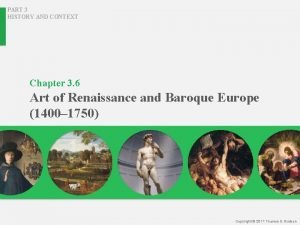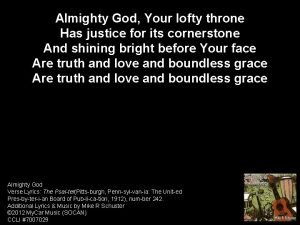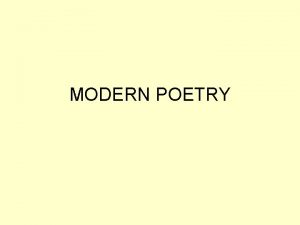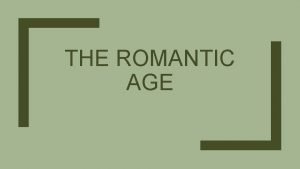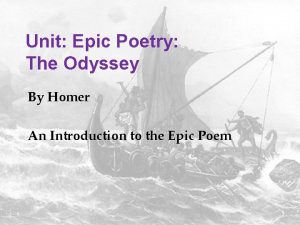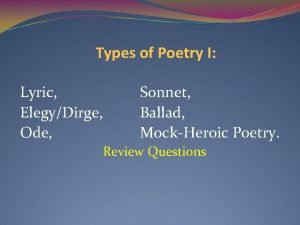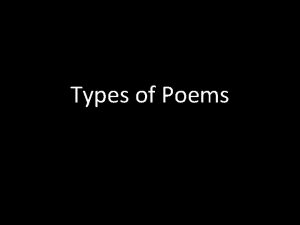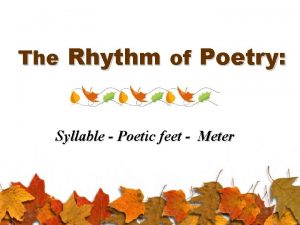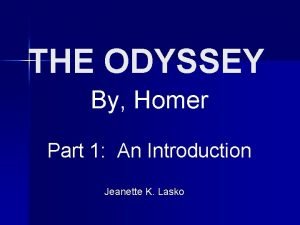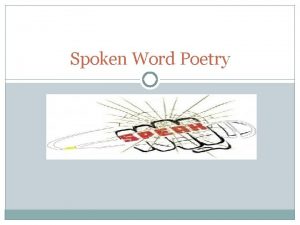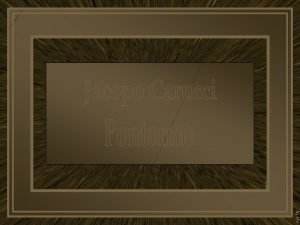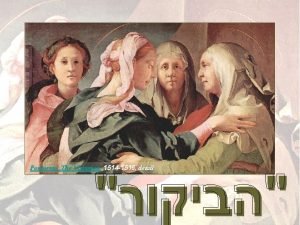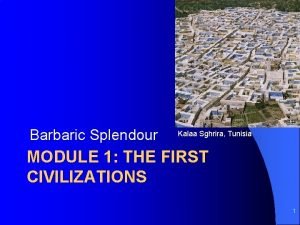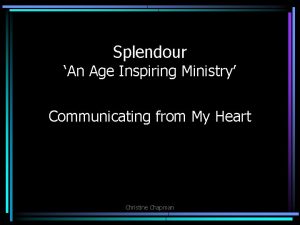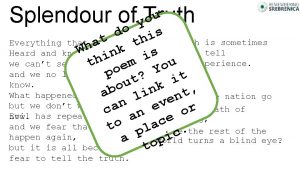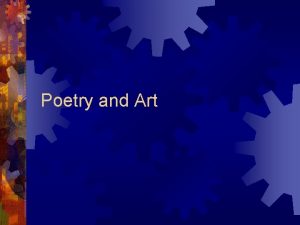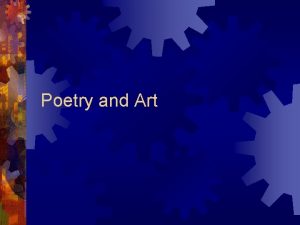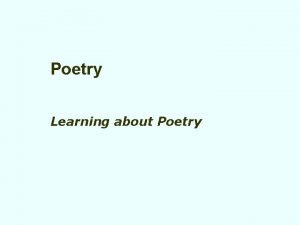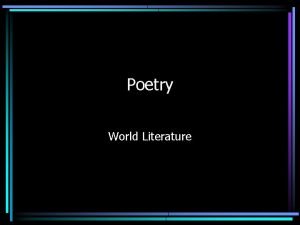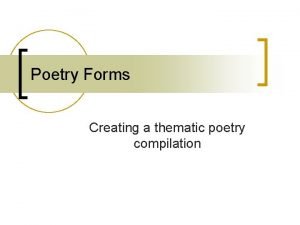the splendour and lofty poetry of Pontormo and


























































- Slides: 58


…the splendour and lofty poetry of Pontormo and of Rosso Fiorentino … l’esthétique et la poésie sublime de Pontormo et Rosso Fiorentino


Pontormo and Rosso Fiorentino Religious painting

Pontormo et Rosso Fiorentino Peinture religieuse

PONTORMO, Jacopo

PONTORMO, Jacopo Madonna and Child with St. Joseph and Saint John the Baptist La Sainte Famille avec saint Jean. Baptiste 1521 -1527 The Hermitage, St. Petersburg




PONTORMO, Jacopo Pala Pucci, Madonna and Child with Saints Retable Pucci, Vierge à l'Enfant avec saint Joseph, saint Jean, saint François d'Assise et saint Jacques 1518 San Michele Visdomini, Florence



PONTORMO, Jacopo Supper at Emmaus Souper à Emmaüs 1525 Galleria degli Uffizi, Florence




PONTORMO, Jacopo Visitation 1528 -1529 San Michele, Carmignano





PONTORMO, Jacopo Madonna and Child with St Anne and Other Saints La Vierge à l'Enfant avec sainte Anne et quatre saints 1529 Musée du Louvre, Paris




ROSSO FIORENTINO

ROSSO FIORENTINO Descent from the Cross Déposition de Croix 1521 Pinacoteca Comunale, Volterra




ROSSO FIORENTINO Spedalingo Altarpiece, Sacred conversation with musical angels Retable de Spedalingo, Vierge et l'Enfant en majesté, aux côtés de saint Jean-Baptiste, saint Antoine Abbé, saint Étienne et saint Jérôme 1518 Galleria degli Uffizi, Florence




ROSSO FIORENTINO Musician Angel Ange jouant du luth 1520 Galleria degli Uffizi, Florence



ROSSO FIORENTINO Cristo con angeli Dead Christ with Angels Le Christ à la rencontre des anges 1525 -1526 Museum of Fine Arts, Boston




ROSSO FIORENTINO Pietà 1537 -1540 Musée du Louvre, Paris




ROSSO FIORENTINO Deposition from the Cross Déposition 1528 San Lorenzo, Sansepolcro





Pontormo and Rosso Fiorentino Religious painting images and text credit www. Music Loreena Mc. Kennitt Prologue created olga. e. thanks for watching olga_oes

Pontormo and of Rosso Fiorentino, the two painters who were without question the most original and unconventional adepts of the new way of interpreting art in that season of the Italian Cinquecento which Giorgio Vasari called the ‘modern manner’. Pontormo and Rosso Fiorentino trained under Andrea del Sarto while maintaining a strongly independent approach and enormous freedom of expression. Pontormo, always a favourite with the Medici, was a painter open to stylistic variety and to a renewal of the traditional approach to composition. Rosso Fiorentino was more tightly bound to tradition, yet at the same time he was fully capable of flights of originality and innovation.

Pontormo et de Rosso Fiorentino, deux peintres qui étaient sans aucun doute les adeptes les plus originaux et les moins conventionnels de la nouvelle façon d’interpréter l’art du Cinquecento italien nommé par Giorgio Vasari « la maniera moderna » . Pontormo et Rosso Fiorentino formés avec Andrea del Sarto mais tout en gardant une approche fortement indépendant et une grande liberté d’expression. Pontormo, protégé par les Médicis, était un peintre ouvert à la variété stylistique et au renouvellement de l’approche traditionnelle de la composition. Rosso Fiorentino, a été plus étroitement lié à la tradition, mais à la fois, il était capable d’originalité et d’innovation.

Pontormo, Jacopo Carucci (Pontorme near Empoli 1494 -Florence 1557) Pontormo was an influential artist in the 16 th century style of Mannerism and also as a precursor to the later Baroque period. Pontormo is known for his introverted and complex personality, which makes him the prototype of the complicated and introverted artist. His art was courageous and innovative: he was able to create his own style, and to break the traditional mold. Pontormo studied the great Italian artists such as Andrea del Sarto, Michelangelo and Leonardo, but he reworked the 15 th century art and he created an original language. In the past, his art was judged excessive and bizarre, for example by Vasari. Pontormo was paying his 'anticlassicismo'. His works are distinguished by the original use of bright colors, for the study of the human figure, which aims to overcome the mastery of Michelangelo. However, even the work of Albrecht Dürer and Lucas van Leyden had a significant influence on Pontormo.

Pontormo, Jacopo Carucci (Pontorme near Empoli 1494 -Florence 1557) Pontormo a été un grand artiste du XVIesiècle; disciple de Andrea del Sarto et condisciple de Rosso Fiorentino, il travailla surtout à Florence. Une certaine tradition littéraire nous parle de son esprit introverti et de son tempérament complexe qui font de lui le prototype de l'artiste génial et mélancolique. À travers son art innovatif il fut capable d'élaborere un style personnel qui brisa les schemas traditionnels de son époque. Pontormo absorba l'art des grands artistes italiens comme Andrea del Sarto, Michel-Ange et Léonard, mais il remania l'art du Quattrocento pour produire enfin un langage original. Pendant les époques passées, à partir de Vasari, son art a été jugée bizarre et inquiétant. C'est ainsi que l'artiste-écrivain aretin lui faisait payer son anticlassicisme. Ses œuvres se caractérisent par l'usage de couleurs brillantes et par l'étude approfondi de l'anatomie humaine visant à dépasser la maîtrise de Michel-Ange. Il faut quand même souligner l'influence de Lucas de Leyde et Albrecht Dürer sur l'artiste toscan.

Rosso Fiorentino (Florence 1494 - Fontainebleau 1540) Born, Giovan Battista di Jacopo, and trained under the Florentine masters, Andrea del Sarto and Pontormo, Fiorentino gained the nickname, Il Rosso for his bright red hair. He worked in the influence of the Florentine School of painting, and was largely responsible for introducing that style to France as part of the School of Fontainebleau. In 1527, the Holy Roman Emperor, Charles V, caused great distress in his imperial Sack of Rome, forcing Il Rosso to flee to France. This is where he was patronized by François I, who revitalized the royal Château de Fontainebleau by inviting artist and architects in decorating the new structure. Il Rosso worked with other Italians such as Francesco Primaticcio, forming the influential First School of Fontainebleau. He spent most of his life working in the Château de Fontainebleau, but his greatest work is often considered that done in Volterra in Tuscany. In the city’s main Duomo (Cathedral) he painted his powerful altarpiece, the Deposition or Descent from the Cross. Another of his well known works is the Musical Angel and his expressive work, Madonna and Child with Saint; which shows his typical gaunt depictions in figures. Although the biographer Giorgio Vasari claimed that Il Rosso committed suicide in his last days at the Château de Fontainebleau, this has been proven otherwise. Il Rosso’s legacy is that his forerunning of the School of Fontainebleau helped to spread the Italian Mannerist style throughout Northern Europe. Vasari had praised Il Rosso’s skill in The Lives of the Artists, saying “…he was consistently very poetic in the composition of his figures, bold and well-grounded in his design, with a charming style and breathtaking fantasy…”

Rosso Fiorentino (Florence 1494 - Fontainebleau 1540) Giovan Battista di Jacopo, dit Rosso Fiorentino, se forme en fréquentant plusieurs atéliers florentins, parmi lesquels celui de Andrea del Sarto, où il y avait Pontormo aussi. Le surnom, Rosso, qui signifie roux, lui vient de la couleur de ses cheveux. Son style, une élaboration personnelle de la tradition florentine, fut exporté en France, où il participa à la création de l'école de Fontainebleau. En 1527, l'année du sac de Rome, la peninsule italienne était bouleversée par les guerres d'Italie. Plusieurs artistes italiens quittèrent le pays à l'époque, parmi ces artistes, Rosso Fiorentino qui se réfugia en France. Il travailla pour François Ier à la décoration du château de Fontainebleau, avec d'autres artistes et architectes italiens, dont on rappelera le bolonais Francesco Primaticcio, en créant ainsi la première école de Fontainbleau. Il passa la dernière partie de sa vie en France, jusqu'à la mort, mais son véritable chef-d'œuvre se trouve en Italie, à Volterra. Dans la cathédrale de la ville toscane il peignit une descente de la croix impressionnante, la Déposition de Volterra. Une autre peinture bien connue est l'Ange jouant du luth, l'expressive Vierge et l'Enfant en majesté, aux côtés de saint Jean-Baptiste, saint Antoine Abbé, saint Etienne et saint Jérôme (Pala dello Spedalingo di Santa Maria Nuova) d'un style emprunté à une austérité formelle qui caractérise son art avant la période française. Le biographe Giorgio Vasari a écrit que Rosso était mort en se suicidant dans le château de Fontainebleau, affirmation qui n'a pas été vérifiée avec d'autres documents. Rosso a été un des "fondateurs"de l'école de Fontainebleau, contribuant à la diffusion du Maniérisme italien dans l'Europe du Nord. Vasari a décrit son talent avec les mots suivant: ". . . il y avait de la poèsie dans la composition de ses figures, le dessin est bien étudié et sans hésitation avec une manière légère et extravagante. . . "
 Indicatcher
Indicatcher Splendour beetle
Splendour beetle Taj mahal poem visual images and simile
Taj mahal poem visual images and simile There are people with gods and lofty ideals
There are people with gods and lofty ideals The throne of justice
The throne of justice Non narrative poem examples
Non narrative poem examples Characteristics of romantic poetry slideshare
Characteristics of romantic poetry slideshare Traditional poetry vs modern poetry
Traditional poetry vs modern poetry Augustan and romantic literature
Augustan and romantic literature Poetry poetry
Poetry poetry Hình ảnh bộ gõ cơ thể búng tay
Hình ảnh bộ gõ cơ thể búng tay Frameset trong html5
Frameset trong html5 Bổ thể
Bổ thể Tỉ lệ cơ thể trẻ em
Tỉ lệ cơ thể trẻ em Chó sói
Chó sói Tư thế worm breton là gì
Tư thế worm breton là gì Chúa yêu trần thế alleluia
Chúa yêu trần thế alleluia Các môn thể thao bắt đầu bằng tiếng nhảy
Các môn thể thao bắt đầu bằng tiếng nhảy Thế nào là hệ số cao nhất
Thế nào là hệ số cao nhất Các châu lục và đại dương trên thế giới
Các châu lục và đại dương trên thế giới Công thức tính thế năng
Công thức tính thế năng Trời xanh đây là của chúng ta thể thơ
Trời xanh đây là của chúng ta thể thơ Cách giải mật thư tọa độ
Cách giải mật thư tọa độ 101012 bằng
101012 bằng Phản ứng thế ankan
Phản ứng thế ankan Các châu lục và đại dương trên thế giới
Các châu lục và đại dương trên thế giới Thể thơ truyền thống
Thể thơ truyền thống Quá trình desamine hóa có thể tạo ra
Quá trình desamine hóa có thể tạo ra Một số thể thơ truyền thống
Một số thể thơ truyền thống Bàn tay mà dây bẩn
Bàn tay mà dây bẩn Vẽ hình chiếu vuông góc của vật thể sau
Vẽ hình chiếu vuông góc của vật thể sau Nguyên nhân của sự mỏi cơ sinh 8
Nguyên nhân của sự mỏi cơ sinh 8 đặc điểm cơ thể của người tối cổ
đặc điểm cơ thể của người tối cổ Giọng cùng tên là
Giọng cùng tên là Vẽ hình chiếu đứng bằng cạnh của vật thể
Vẽ hình chiếu đứng bằng cạnh của vật thể Vẽ hình chiếu vuông góc của vật thể sau
Vẽ hình chiếu vuông góc của vật thể sau Thẻ vin
Thẻ vin đại từ thay thế
đại từ thay thế điện thế nghỉ
điện thế nghỉ Tư thế ngồi viết
Tư thế ngồi viết Diễn thế sinh thái là
Diễn thế sinh thái là Dot
Dot Số nguyên tố là
Số nguyên tố là Tư thế ngồi viết
Tư thế ngồi viết Lời thề hippocrates
Lời thề hippocrates Thiếu nhi thế giới liên hoan
Thiếu nhi thế giới liên hoan ưu thế lai là gì
ưu thế lai là gì Khi nào hổ mẹ dạy hổ con săn mồi
Khi nào hổ mẹ dạy hổ con săn mồi Sự nuôi và dạy con của hổ
Sự nuôi và dạy con của hổ Hệ hô hấp
Hệ hô hấp Từ ngữ thể hiện lòng nhân hậu
Từ ngữ thể hiện lòng nhân hậu Thế nào là mạng điện lắp đặt kiểu nổi
Thế nào là mạng điện lắp đặt kiểu nổi The odyssey and epic poetry: an introduction, part 1
The odyssey and epic poetry: an introduction, part 1 Elegy poem examples
Elegy poem examples Types of poems
Types of poems Mood versus tone
Mood versus tone Foot in poetry definition
Foot in poetry definition Who was homer
Who was homer Spoken poetry english
Spoken poetry english
